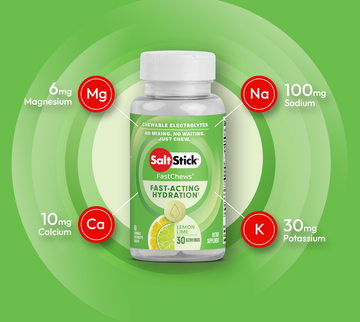AND NOTHING ELSE.
Manufactured in the USA with the highest quality ingredients and certified through Informed Choice. NO artificial colors, flavors, or sweeteners.

Revolutionize hydration with a faster, more convenient way to replenish electrolytes.
As chewable tablets, FastChews are clinically proven to start working in 45 seconds — no mixing and no waiting. Just chew.
SUGGESTED USE: Chew 2 tablets for every 30 minutes of exercise. Drink water as needed.
Manufactured in the USA with the highest quality ingredients and certified through Informed Choice. NO artificial colors, flavors, or sweeteners.

Manufactured in the USA with the highest quality ingredients and certified through Informed Choice. NO artificial colors, flavors, or sweeteners.